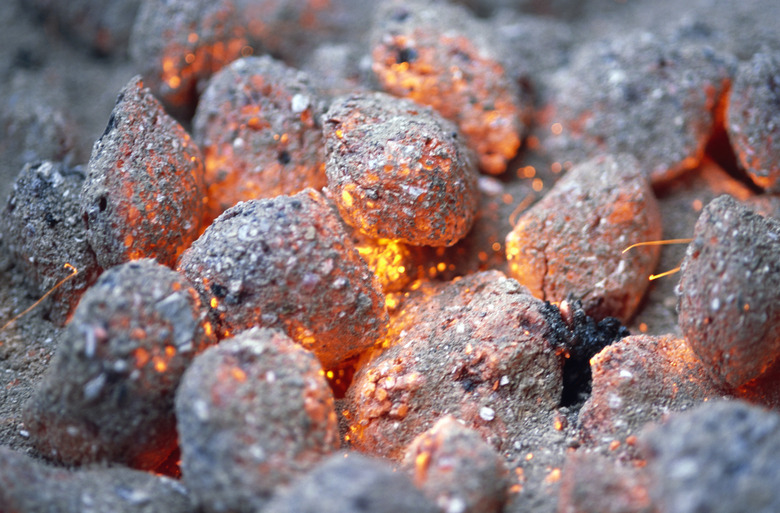Properties Of Fossil Fuels
Fossil fuels are the remains of animal and plant materials that lived millions of years ago, trapped under layers of rock for eons and transformed into substances that burn easily, and give off large amounts of energy. Although fossil fuels power much of modern civilization, they also see use in fertilizers, plastics and many other chemical compounds. Despite their widely different appearances, coal, natural gas and petroleum oil have several properties in common.
Organic Molecules
Organic Molecules
Without exception, fossil fuels contain organic molecules — rings or chains of atoms consisting primarily of carbon. Bituminous coal, natural gas and oil are hydrocarbons, which are combinations chiefly of hydrogen and carbon. Time and pressure transform bituminous coal into anthracite, a rock-like substance containing mostly carbon.
Mined Substances
Mined Substances
Because they have been trapped underground for millions of years, fossil fuels are extracted by various mining operations such as drilling and digging into the earth. Geologists have identified the rock formations that accompany each type of fuel. For example, reservoirs of oil and natural gas can be found under features called salt domes — natural salt deposits that form a layer on top of fossil fuel "bubbles." Being lighter, the gas floats to the top with the liquid oil lying underneath.
Combustible
Combustible
Fossil fuels are combustible, burning in the presence of oxygen and forming water vapor, carbon dioxide, ash and other byproducts. Their ability to burn comes largely from their carbon content; carbon in the fuel combines with oxygen in the air, giving off large amounts of heat. Components of fossil fuels, such as gasoline, diesel oil and natural gas have different flash points, some burning easily and others taking more energy to ignite.
Non-Renewable Fuels
Non-Renewable Fuels
A finite supply of coal, oil and gas exists, making them non-renewable fuels. Although modern prospecting technologies help identify new deposits of fossil fuels, and new methods of extraction make known reserves more productive, these substances form much more slowly than their rates of consumption. Because civilization depends on abundant, inexpensive energy, the prospect of running out of fuel spurs interest in renewable sources such as solar, wind and hydroelectric power.
Cite This Article
MLA
Papiewski, John. "Properties Of Fossil Fuels" sciencing.com, https://www.sciencing.com/properties-fossil-fuels-8190/. 24 April 2017.
APA
Papiewski, John. (2017, April 24). Properties Of Fossil Fuels. sciencing.com. Retrieved from https://www.sciencing.com/properties-fossil-fuels-8190/
Chicago
Papiewski, John. Properties Of Fossil Fuels last modified March 24, 2022. https://www.sciencing.com/properties-fossil-fuels-8190/
